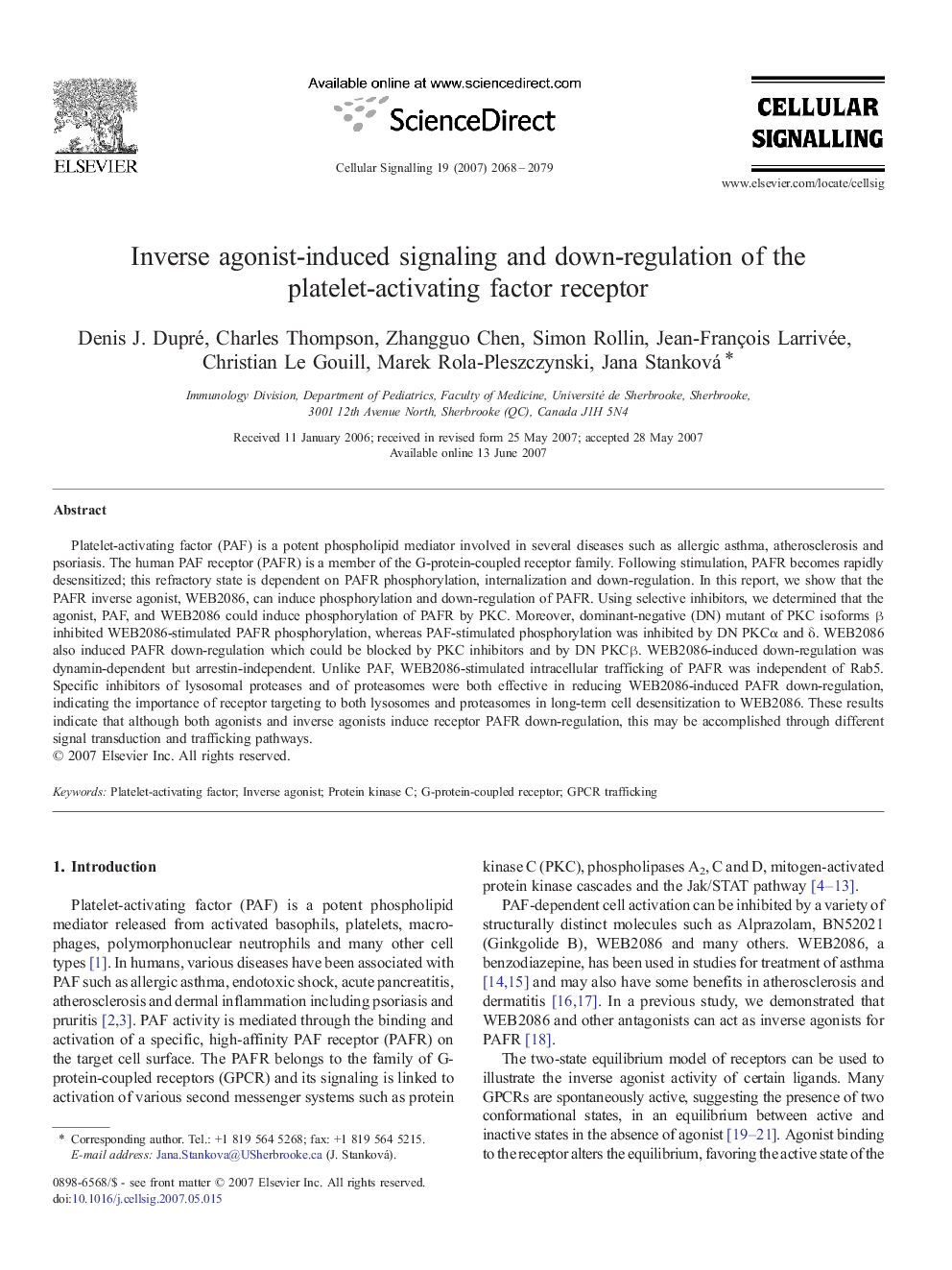| Article ID | Journal | Published Year | Pages | File Type |
|---|---|---|---|---|
| 1964369 | Cellular Signalling | 2007 | 12 Pages |
Abstract
Platelet-activating factor (PAF) is a potent phospholipid mediator involved in several diseases such as allergic asthma, atherosclerosis and psoriasis. The human PAF receptor (PAFR) is a member of the G-protein-coupled receptor family. Following stimulation, PAFR becomes rapidly desensitized; this refractory state is dependent on PAFR phosphorylation, internalization and down-regulation. In this report, we show that the PAFR inverse agonist, WEB2086, can induce phosphorylation and down-regulation of PAFR. Using selective inhibitors, we determined that the agonist, PAF, and WEB2086 could induce phosphorylation of PAFR by PKC. Moreover, dominant-negative (DN) mutant of PKC isoforms β inhibited WEB2086-stimulated PAFR phosphorylation, whereas PAF-stimulated phosphorylation was inhibited by DN PKCα and δ. WEB2086 also induced PAFR down-regulation which could be blocked by PKC inhibitors and by DN PKCβ. WEB2086-induced down-regulation was dynamin-dependent but arrestin-independent. Unlike PAF, WEB2086-stimulated intracellular trafficking of PAFR was independent of Rab5. Specific inhibitors of lysosomal proteases and of proteasomes were both effective in reducing WEB2086-induced PAFR down-regulation, indicating the importance of receptor targeting to both lysosomes and proteasomes in long-term cell desensitization to WEB2086. These results indicate that although both agonists and inverse agonists induce receptor PAFR down-regulation, this may be accomplished through different signal transduction and trafficking pathways.
Related Topics
Life Sciences
Biochemistry, Genetics and Molecular Biology
Biochemistry
Authors
Denis J. Dupré, Charles Thompson, Zhangguo Chen, Simon Rollin, Jean-François Larrivée, Christian Le Gouill, Marek Rola-Pleszczynski, Jana Stanková,
